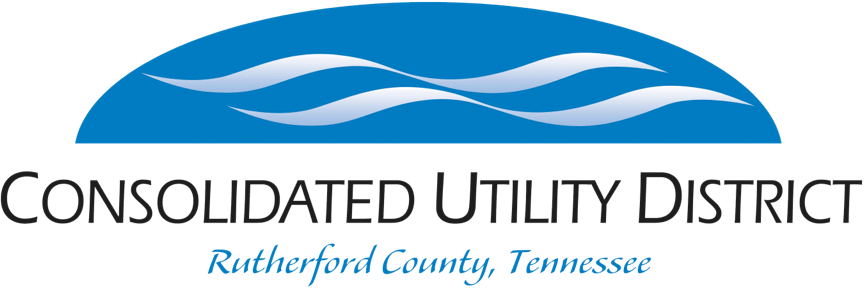How CUD Manages Water Pressure/Flow Concerns
When CUD receives questions or complaints about decreases in water pressure or flow, it’s important to remember that utilities are required to deliver water at 20 psi (pounds per square inch – a measurement of pressure) or greater per regulations from the American Water Works Association and the Tennessee Department of Environment and Conservation.
In any installation where the water pressure exceeds 80 psi for even a short time, both a pressure reducing valve (PRV) and an expansion tank on the cold water supply line to the water heater are required.
When our ratepayers request assessment of their water pressure or flow, the CUD Water Quality Team takes note of the following …
• On the utility side, we know that shut-off valves do sometimes fail and may not be fully open, which will restrict flow to the customer.
• Curb stop valves (which function as on/off switches for the water supply) are on the service line before the meter yoke (which holds and supports the water meter and water line) and can also restrict water flow if not fully open.
• Check valves (one-way valves that allow flow in only one direction) sometimes break and become stuck in the meter yoke. This can restrict water to the customer.
• A leak in a service line can reduce flow and pressure to the customer.
If pressure and flow are normal and holding at the meter, what can be causing reduced pressure or flow?
• Water flow patterns can provide clues as to what the problem may be. If water flow tapers down after a faucet is turned on, it may be a sign of a failed PRV or some other restriction in the customer’s plumbing.
• PRVs can fail in a variety of ways. Sometimes they require adjustment to supply satisfactory pressure and flow.
• Galvanized pipes (steel pipes with a zinc coating to prevent rust) are more common in older homes. Tuberculation (growth of reddish-brown iron oxide, usually in older pipes) can build inside the pipe restricting water flow. It only takes a short piece of galvanized pipe to cause problems.
• Water softeners (systems that remove calcium, magnesium, and other minerals from water) are equipped with a bypass valve, which allows you to shut off water to the softener when maintenance is needed – while still receiving water supply to your home. If the customer has a water softener, CUD may advise using the bypass. Water softeners can and sometimes will restrict the flow in plumbing. However, CUD WILL NOT bypass a water softener for a customer.
CUD may also take these steps on the customer side of the meter …
• If the water meter is still turning, CUD will advise the customer to inspect their premises for a leak. That may be the cause of the low pressure/flow in the home.
• We may briefly attach a pressure gauge to an outside spigot to take a pressure reading and compare the data to a reading at the meter.
Your home may also have a pressure reducing valve (PRV) to ensure practical and safe working pressures for incoming water. Typical residential pressure ranges from 35 to 75 psi, and each PRV must be sized properly for the application. However, when a PRV fails, there are usually one of more of the following signs …
• Pressure not holding on the gauge past the PRV
• No reduction in water pressure
• Noises in plumbing after the customer’s water is turned off
• Reduced flow at the customer’s faucet
• Customer unknowingly has two PRVs

